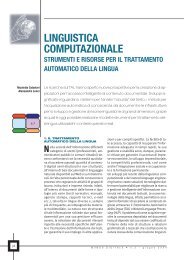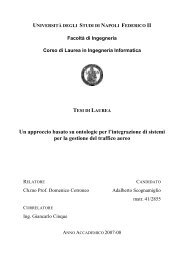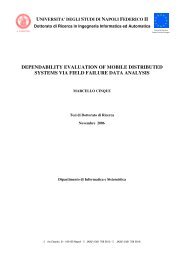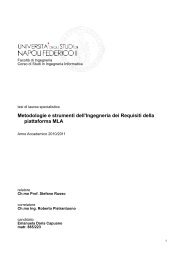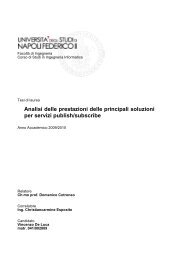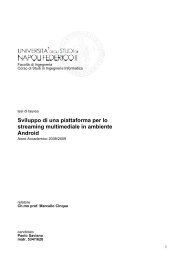Facoltà di Ingegneria Tesi di laurea ANALISI DELLE TECNOLOGIE ...
Facoltà di Ingegneria Tesi di laurea ANALISI DELLE TECNOLOGIE ...
Facoltà di Ingegneria Tesi di laurea ANALISI DELLE TECNOLOGIE ...
Create successful ePaper yourself
Turn your PDF publications into a flip-book with our unique Google optimized e-Paper software.
software VMM e su un hardware VMM. Hanno scoperto, inoltre, che il supporto hardware<br />
falliva nel fornire un vantaggio nelle prestazioni per due ragioni principali: non offriva<br />
supporto per la virtualizzazione della MMU e non coesisteva bene con le tecniche software<br />
esistenti per la virtualizzazione della gestione della memoria.<br />
4.1.1 Esperimenti<br />
Gli ingegneri VMware hanno esaminato un certo numero <strong>di</strong> workloads (attraverso i cosiddetti<br />
benchmarks, ovvero dei software test per la valutazione dell’hardware) sul software<br />
hypervisor VMware Player 1.0.1 e su un hardware VMM sperimentale. La piattaforma<br />
hardware host utilizzata è una HP xw4300 workstation, con processore Intel Pentium 4 3.8<br />
GHz dotato <strong>di</strong> tecnologia VT.<br />
Per un workload a livello utente, hanno eseguito SPECint2000 (un programma che testa le<br />
performance della CPU attraverso vari benchmark) su Red-Hat Enterprise Linux 3; poiché i<br />
calcoli a livello utente non sono particolarmente onerosi per gli hypervisor, ci si aspettava che<br />
entrambi i guest venissero eseguiti con prestazioni molto vicine a quelle native.<br />
Figura 4.1: risultati <strong>di</strong> SPECint2000 e SPECjbb2005<br />
Infatti la figura conferma le attese, mostrando un rallentamento del 0-9% rispetto<br />
all’esecuzione nativa, con un rallentamento me<strong>di</strong>o del 4% per il software VMM e del 5% per<br />
68



